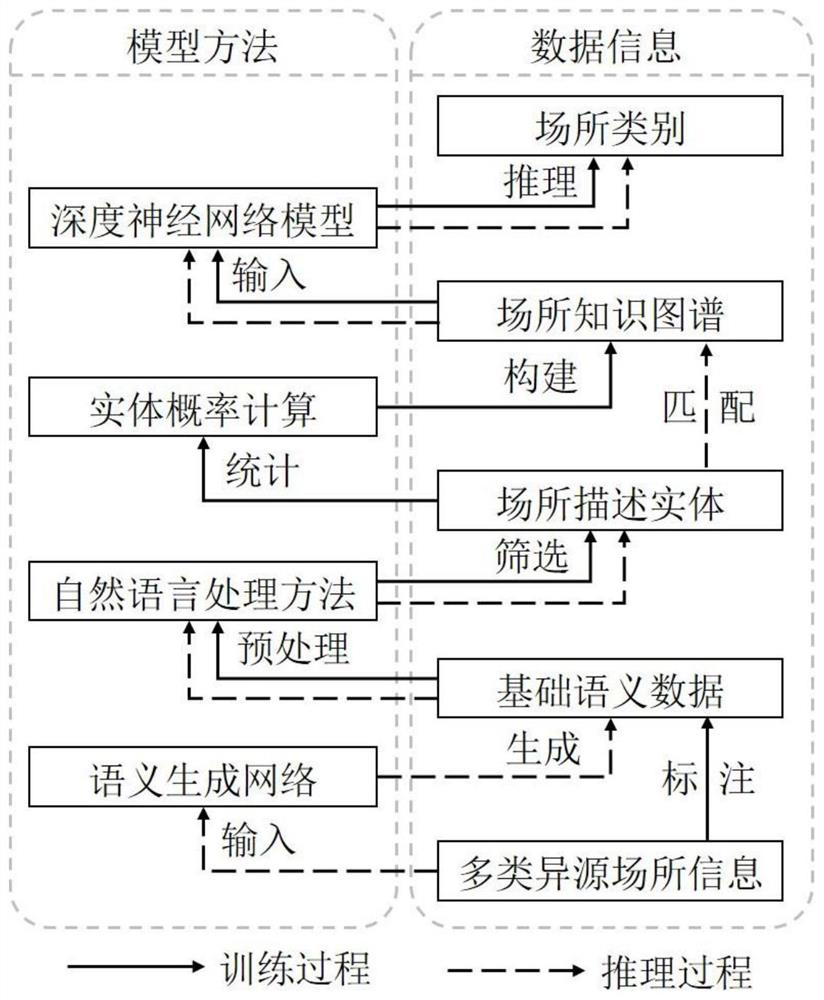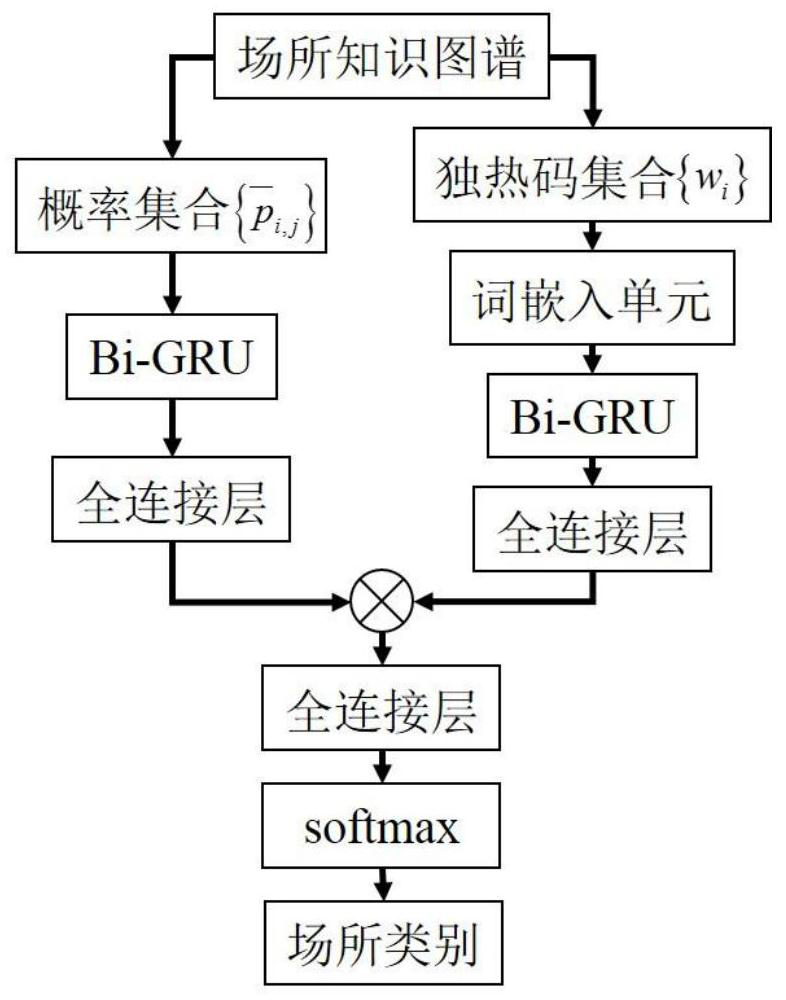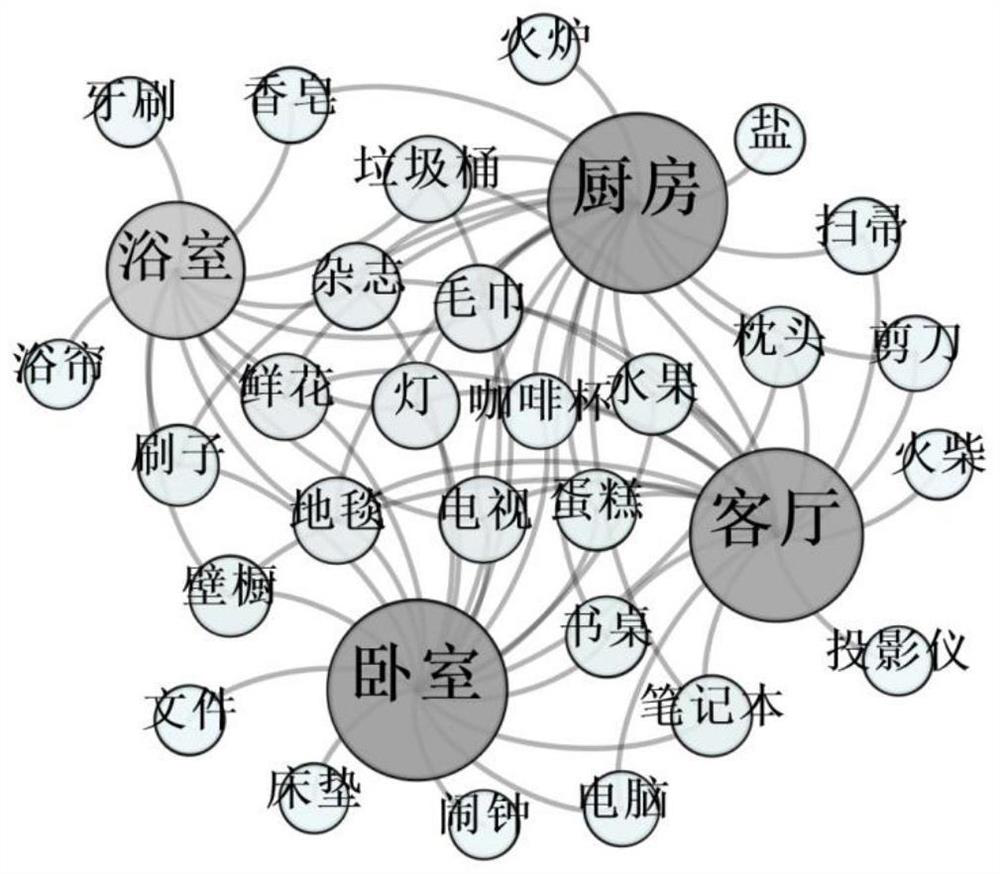A Place Recognition Method Based on Knowledge Graph Reasoning
A technology of knowledge graph and recognition method, which is applied in the direction of reasoning method, knowledge expression, neural learning method, etc., can solve the problems of low recognition rate of recognition method, achieve good place recognition effect, simple steps, and easy to realize effect
- Summary
- Abstract
- Description
- Claims
- Application Information
AI Technical Summary
Problems solved by technology
Method used
Image
Examples
Embodiment 1
[0034] Embodiment 1: a kind of place recognition method based on knowledge map reasoning, comprises the following steps:
[0035] Step 1) basic semantic data acquisition,
[0036] The basic semantic data mainly describes the items contained in a specific place, the events that occur, and the special semantic concepts related to the place. All kinds of information, including images, sounds, distances, voices, etc., are described and marked in artificial natural language, so as to obtain basic semantic data and corresponding place categories. On the other hand, in the process of place recognition and reasoning, the above semantic information will be automatically generated according to the types of heterogeneous information, combined with the existing semantic generation model;
[0037] Step 2) place description entity generation,
[0038] Use natural language processing methods such as text segmentation, stop word removal, entity extraction, morphological restoration, and man...
specific Embodiment
[0053] Specific embodiments: the framework of a place recognition method based on knowledge map reasoning proposed by the present invention is as follows figure 1 As shown, it includes the training process and inference process respectively. Such as figure 1 As shown, the training process mainly includes the following four steps:
[0054] 1) Obtain basic semantic data by manual labeling from multiple types of heterogeneous place information, mainly the semantics of things covered by place information described in natural language, and use this as a data sample to design a semantic generation model;
[0055] 2) Use natural language processing methods to preprocess and screen basic semantic data to obtain the description entity knowledge of places;
[0056] 3) Through the sample statistics in the actual application environment, the occurrence probability corresponding to the description entity is obtained, thereby forming a place knowledge map with the basic triple structure o...
specific Embodiment 1
[0063] Specific embodiment 1 experimental process and result
[0064] The implementation process of the place recognition method based on knowledge map reasoning in the present invention will be further described below in conjunction with specific experiments and accompanying drawings. This embodiment is only a preferred example of the present invention and should not be construed as a limitation of the present invention.
[0065] The place information data used in the experiment of the present invention comes from J.Xiao et al. (SUN dataset.https: / / vision.cs.princeton.edu / projects / 2010 / SUN / ,2020-11-25. HaysJ, Ehinger K A, et al.SUN database:Large-scale scene recognition from abbey tozoo[C] / / Computer Vision&Pattern Recognition.IEEE,2010.) A large-scale scene image database, which contains 397 categories and a total of about 100,000 images RGB images, each scene contains at least 100 image samples, and about 16,000 images have been manually labeled, and the main objects contain...
PUM
 Login to View More
Login to View More Abstract
Description
Claims
Application Information
 Login to View More
Login to View More - R&D
- Intellectual Property
- Life Sciences
- Materials
- Tech Scout
- Unparalleled Data Quality
- Higher Quality Content
- 60% Fewer Hallucinations
Browse by: Latest US Patents, China's latest patents, Technical Efficacy Thesaurus, Application Domain, Technology Topic, Popular Technical Reports.
© 2025 PatSnap. All rights reserved.Legal|Privacy policy|Modern Slavery Act Transparency Statement|Sitemap|About US| Contact US: help@patsnap.com



